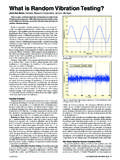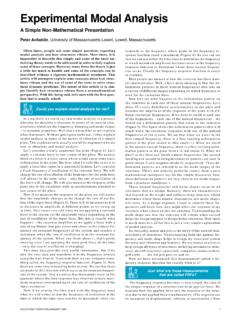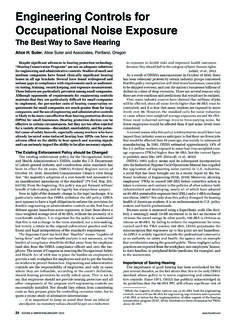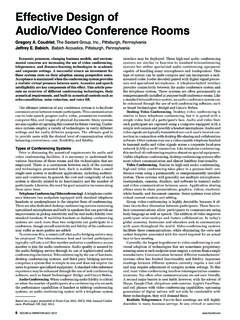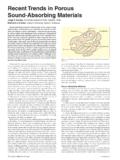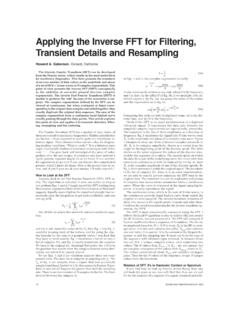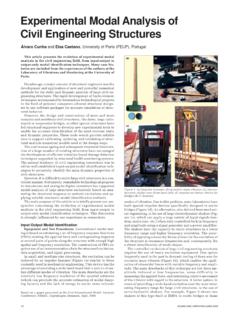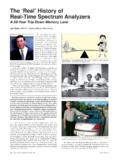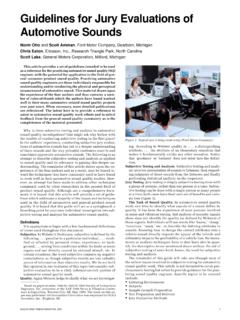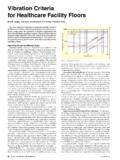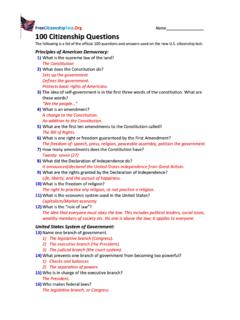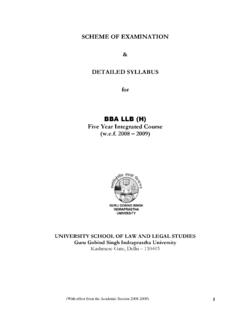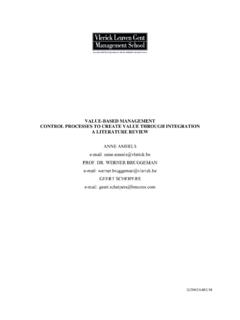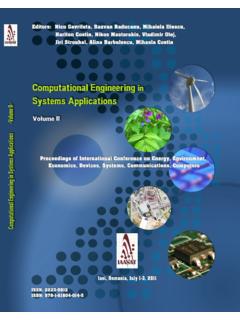Transcription of Support Conditions for Experimental Modal Analysis
1 SOUND AND VIBRATION/JUNE 2007 When Modal testing a structure for model validation, free boundary Conditions are frequently approximated in the lab to compare with free boundary-condition analyses. Free Conditions are used because they are normally easy to simulate analytically and easier to approximate experimentally than boundary condi-tions with fixed Conditions . However, the free Conditions can only be approximated in the lab, because the structure must be supported in some manner. This article investigates and quanti-fies the effects of the Support Conditions on both the measured Modal frequencies and damping factors.
2 The investigation has determined that the measured Modal damping is significantly more sensitive to the Support system (stiffness and damping) than the measured Modal frequency. Included in the article are simple formulas that can be used to predict the effect on measured Modal parameters given the Support stiffness and testing is frequently used to validate the accuracy of struc-tural dynamic models. Modal tests are performed on a structure to measure the Modal frequencies, damping factors, and mode shapes. However during the Modal test, a structure must be supported in some manner by the surrounding environment.
3 Very frequently, free boundary Conditions are the desired Support Conditions for comparison with computational results. Free Conditions can only be approximated in the lab using soft supports, but the stiffness and damping of these added supports will affect the Modal parameters of the combined structural system. A required part of pre-test plan-ning is to design the Support system to minimally affect the Modal parameters. Obviously, one can include a model of the Support system as part of the overall system model, and sometimes that is required due to compromises involved in the Support system design.
4 But one would like to be able to calculate the effects of the Support system on the Modal parameters to determine whether the effects are negligible or need to be accounted of the primary objectives of this article is to derive fairly simple formulas and rules of thumb by which one can calculate the effect of the Support Conditions on the measured Modal fre-quencies and damping factors so that appropriate Support design can be performed before the test. The formulas and the effects of poor Support Conditions are also illustrated with results from two different Modal tests.
5 Historically, there has been concern for Support stiffness and its effect on measured Modal frequencies. Bisplinghoff, Ashley and Halfman1 discuss the effects of Support stiffness and mass on the Modal frequencies, based on results of Wolf3 discusses the effects of Support stiffness with regard to Modal testing of automotive bodies. He reports that the rule of thumb to simulate free boundary Conditions is to design the Support system so that the rigid-body modes, that is, the modes that would be at zero frequency except for the Support Conditions , are no more than one-tenth the frequency of the lowest elastic mode.
6 But it is seldom possible to achieve this separation for vehicle tests. He states that test engineers frequently use a 1:3 to 1:5 separation ratio between the rigid-body modes and the lowest elastic mode. Wolf shows that such stiff supports can lead to significant errors in the measured Modal frequencies. One of the current authors discussed Support Conditions in an earlier work,4 and this article expands on that work with additional theoretical results and illustrates the theory with experiments and modeling. In his second edition of Modal Testing,5 Ewins briefly discusses the issue of location of suspen-sions for free boundary Conditions in the test planning chapter.
7 More recently, Brillhart and Hunt presented an exposition of many of the practical difficulties involved in designing good fixtures for a Modal test,6 and Avitabile briefly discussed this issue in a Back to Basics this article our primary emphasis here was to develop some quantitative measures of the effect of the Support Conditions on the Modal frequencies and the Modal damping ratios. Most finite-element models could include the Support stiffnesses and masses in the model, thus taking into account those effects. However, structural dynamic models often do not initially include damping, but use the measured Modal damping ratios from a test to create a model, including damping.
8 There is typically no validation of the damping model; it is taken directly from the test with the Support Conditions included. Consequently, one must be concerned with how the Support Conditions affect the measured damping. The remainder of this article is divided into four primary sections. In the first section, simple formulas are derived for a two degree-of-freedom system. These formulas are simplistic, but can be used to derive rules of thumb and also easily illustrate the severity of the problem. The next section develops approximate formulas for the multi-degree-of-freedom problem that can be used for general structures.
9 The last two sections further illustrate both the problem and the theory with some example Modal tests, first from a very lightly damped uniform beam and second with a wind turbine blade that required a Modal test for model validation and damp-ing Two Degree-of-Freedom SystemPerhaps the best way to develop an understanding of the effects of Support Conditions is to examine a two degree-of-freedom (DOF) system. Wolf3 also analyzed a two DOF system, but we examine a somewhat different system that also includes damping. Let us consider a simple model, pictured in Figure 1, of an unconstrained structure (free boundary Conditions ), consisting of two masses connected by a linear spring and a viscous damper with motion restricted to a single could add Support Conditions in several ways, but let us add them symmetrically as diagrammed in Figure 2.
10 In these figures, the t subscript designates parameters for the true system, while the s subscript designates the added Support stiffness and damping. One Support Conditions forExperimental Modal AnalysisThomas G. Carne, D. Todd Griffith and Miguel E. CasiasSandia National Laboratories, Albuquerque, New MexicoBased on the paper Support Conditions for Free Boundary-Condition Modal Testing, presented at IMAC XXV, the 25th International Modal Analysis Conference, Orlando, FL, February 19-22, is a multiprogram laboratory operated by Sandia Corporation, a Lock-heed Martin Company for the United States Department of Energy s National Nuclear Security Administration under contract 1.
